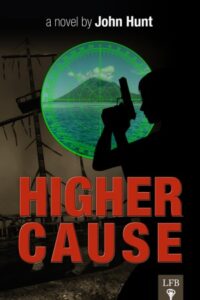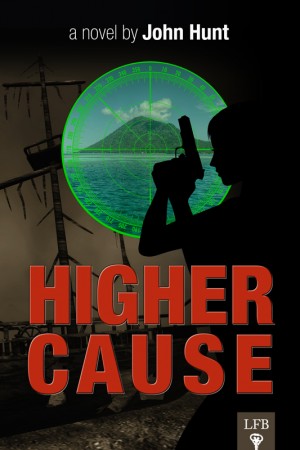
“The Cartographer Wasps and the Anarchist Bees” is a delightful fable,1 not only on account of the political themes it explores but also some very fine writing. The short story was first published in Clarkesworld Magazine (Issue 55, April 2011) and then republished by Escape Pod (Episode 343, March 2012). If you're partial to audio fiction, you can spend a pleasant half hour listening to the story being narrated by Kate Baker (Clarkesworld) or Mur Lafferty (Escape Pod).2 Yu's tale has been nominated for a 2011 Nebula Award and a 2012 Hugo and is a finalist for a Locus Award and the Million Writers Award, and it is deserving of all of these honors. Yu, a student at Princeton, is a new author to watch.
Yu's tale warns of the transitive and cyclical nature of violence — from thoughtless destruction to calculated imperialism. It begins with a boy attacking a wasp nest and ending the uneasy truce between the wasps and his village. The villagers make an amazing discovery: the wasps had inked beautiful maps of the land (China) into the walls of their nest. Soon the wasps were hunted to near extinction and a group of survivors manages to escape.
The leader of the surviving wasps has learned well the hard lessons of realpolitick. Once the new nest has been established, she orders her wasps to expand aggressively. A nearby bee hive is enslaved and forced to pay tribute. The victim of violence has resolved to avoid being the victim ever again by becoming the oppressor.
But the subjugation of the bees has unintended consequences. Some of the bees are educated and trained in philosophy, science, and cartography. One day a bee with an inclination to anarchism is born and so educated and trained, and she produces a brood of anarchist sons…
[continue reading…]
Help Promote Prometheus Unbound by Sharing this Post

This review is part of a series covering each installment of the serialized novel Higher Cause, written by John Hunt and published by Laissez Faire Books. To catch up, start with the announcement, the book's link-rich table of contents, and the first review.

The next installment of John Hunt's serialized novel, Higher Cause, is out and ready for reading. Last time we met a couple characters and got a glimpse of a plot. This time we follow one of the two characters, Petur Bjarnasson, as he continues to recruit. We also find out more details of his plan, while the shadow of the villain is cast in Amsterdam.
Mr. Hunt is assembling the pieces of a real thriller — so far. While Petur is recruiting, he runs into his first obstacle, which tells him and us that someone is on to him and does not want him to succeed. He also has an unlikely encounter with someone he had glimpsed in another city. Petur invents an excuse for it, but as readers we suspect something else is up. The locations are also interesting, and it looks like we will be hopping all over the world over the course of the story.
Chapter three is a repetition of chapter one, with a different location and a new target. This time, Petur is recruiting a man named Thomas Standall to invest in his vision. The danger here is for the story to lag as we go over ground we have already gone over. Hunt does a good job of feeding us more information about the plan this time, which does go some way to keeping our interest, but I still got a bit of a restless feeling at the inevitable repetition. If I were to give advice on the structure of the opening, I would suggest omitting the prologue and, in chapter one, showing us only the very end of the sales pitch, where Onbacher agrees to invest $400 million. With this little bit of information and next to nothing else, curiosity would be piqued. Then, in chapter three, we can see the recruitment process rather than have to see a lot of it twice in a short time.
[continue reading…]
Help Promote Prometheus Unbound by Sharing this Post

This review is part of a series covering each installment of the serialized novel Higher Cause, written by John Hunt and published by Laissez Faire Books. To catch up, start with the announcement, the book's link-rich table of contents, and our initial news coverage.

Laissez Faire Books is serializing a novel by John Hunt, a libertarian and student of Austrian Economics. Titled Higher Cause, it promises to be an epic adventure story. The first installment (of 22) consists of a prologue and the first two chapters. The remaining installments will be published every Wednesday, followed by my reviews every Friday.
I am generally in favor of eschewing prologues, and though the present one was not uninteresting, at this point I feel it was unnecessary. It seemed to set up a mystery, but then the mystery was solved at the end of the first chapter. Also, all the major points of the prologue were covered in chapter one, in brief. I would say it was better to just get to the first chapter.
However, the author does a good job of enticing us with vague but interesting possibilities. In chapter one we meet Petur, who comes to a rich investor with a proposal in a manner reminiscent of Atlas Shrugged. The details are withheld from the reader, but some great error that threatens humanity has been discovered, and Petur is attempting to set things right, before it is too late, with a market-oriented plan of attack.
In the second chapter we meet Jeff, an undercover agent trying to throw a monkey wrench in the gears of a Mexican drug lord's machine. He runs into a little trouble and a small twist at the end.
[continue reading…]
Help Promote Prometheus Unbound by Sharing this Post


Mild Spoilers
Hans Zimmer has composed an unrelenting score that is being blasted in movie theaters across the world right now. It is not bad music by any means, but why it is launched like an assault at the eardrums I cannot fathom. Underneath this score, if one listens carefully, one can hear a movie playing, accompanied by corresponding images on a screen. The movie is called The Dark Knight Rises, and it is considered a part of Christopher Nolan's Batman trilogy on the grounds that Batman makes a couple brief appearances in it.
It takes place eight years after the previous installment. Batman, erroneously believed to be the murderer of Harvey Dent, has disappeared, and his alter ego, billionaire Bruce Wayne, now lives as a recluse. A new super villain, Bane (Tom Hardy), has emerged to wreak havoc in Gotham City. Catwoman (Anne Hathaway) is also on the prowl, though whether she is a villain or heroine is less certain until the end of the film.
Bruce Wayne is moved to return the Caped Crusader to the streets of Gotham City as the Bane menace grows. He is pushed to this decision by a police officer with amazing faith in his pure hunch that Bruce Wayne is somehow connected to Batman, as well as the theft of his belongings and personal information by Catwoman, who was working for him as a maid in order to position herself for the strike, and who was helped along by an assistant we never really get to know, but both of them are radical egalitarians with some connection to Bane, who it turns out was behind the guy who hired Catwoman to burgle Bruce Wayne because he wants the information to set Wayne up so that he can financially ruin Wayne so that his people can take over Wayne Enterprises in the ensuing bankruptcy so that he, because he knows who Batman is, can get access to Batman's arsenal so he can use it to further his plans to…
You know, it's actually a little complicated. Much like its predecessor. Indeed, the movie shares all of its predecessor's flaws but got shortchanged on the strengths.
[continue reading…]
Help Promote Prometheus Unbound by Sharing this Post






